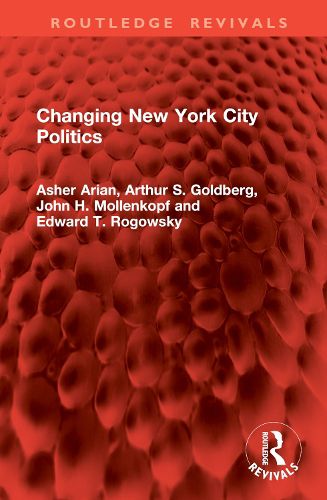Readings Newsletter
Become a Readings Member to make your shopping experience even easier.
Sign in or sign up for free!
You’re not far away from qualifying for FREE standard shipping within Australia
You’ve qualified for FREE standard shipping within Australia
The cart is loading…






First published in 1991, Changing New York City Politics provides an important grounding for understanding where New York City politics is likely to go in the coming two years.
Three decades after New York City's first Black mayor was elected and then defeated after only one term, the city's second Black mayor is facing challenges that in many ways are similar to those of his predecessor, yet different in others. Like David Dinkins, Mayor Eric Adams faces worries about crime and public disorder, recovery from an economic downturn, and criticism over his managerial style. It may be a quite different city today in terms of the makeup of its electorate - less white, more diverse, but certainly no more Black - and Adams may have a closer connection to the Police Department than Dinkins could manage - but the challenges of constructing a multi-racial electoral and governing coalition in the face of skepticism from white voters remains.
This book will be of interest to students and researchers of political science, American history, and comparative politics.
$9.00 standard shipping within Australia
FREE standard shipping within Australia for orders over $100.00
Express & International shipping calculated at checkout
First published in 1991, Changing New York City Politics provides an important grounding for understanding where New York City politics is likely to go in the coming two years.
Three decades after New York City's first Black mayor was elected and then defeated after only one term, the city's second Black mayor is facing challenges that in many ways are similar to those of his predecessor, yet different in others. Like David Dinkins, Mayor Eric Adams faces worries about crime and public disorder, recovery from an economic downturn, and criticism over his managerial style. It may be a quite different city today in terms of the makeup of its electorate - less white, more diverse, but certainly no more Black - and Adams may have a closer connection to the Police Department than Dinkins could manage - but the challenges of constructing a multi-racial electoral and governing coalition in the face of skepticism from white voters remains.
This book will be of interest to students and researchers of political science, American history, and comparative politics.